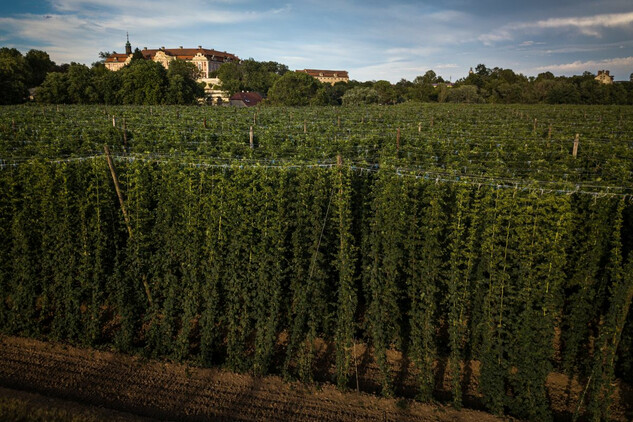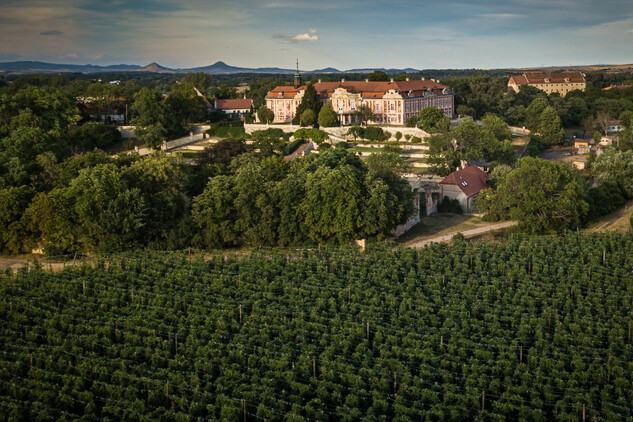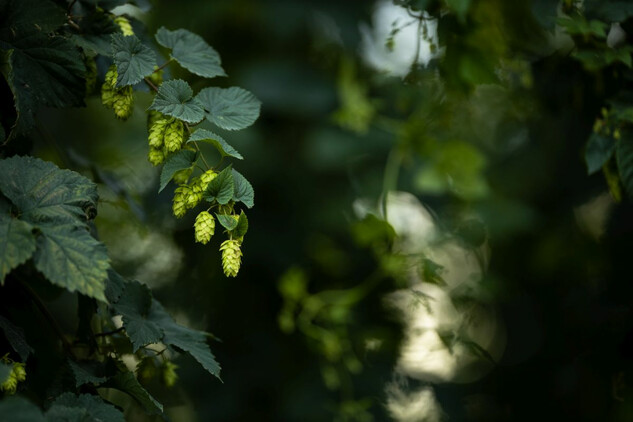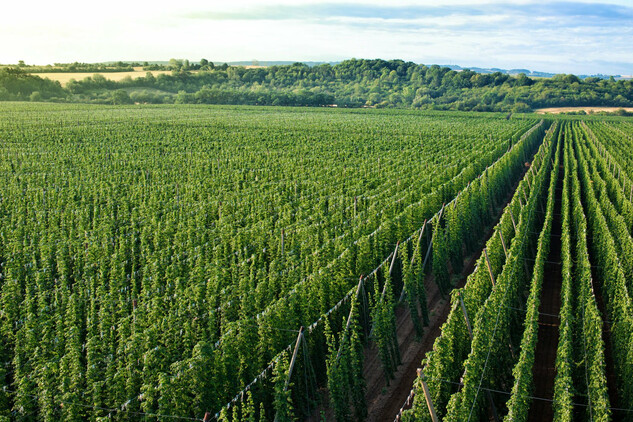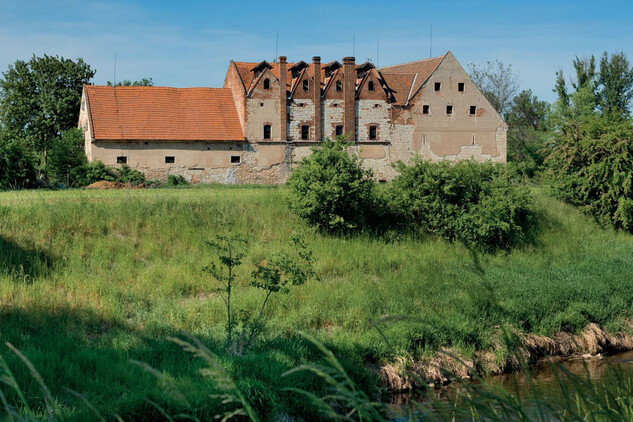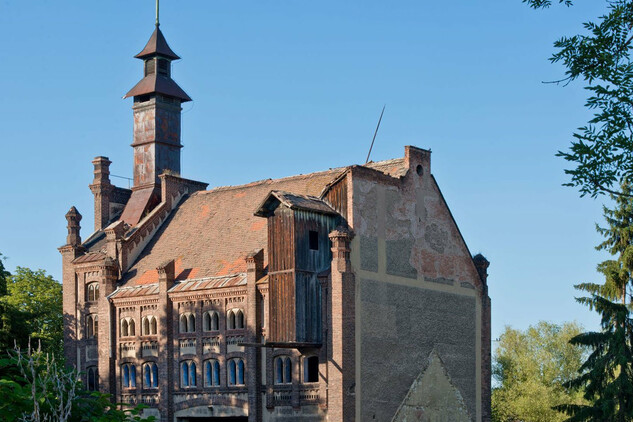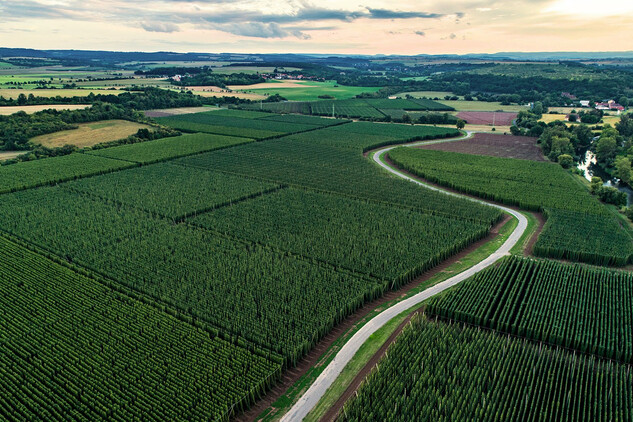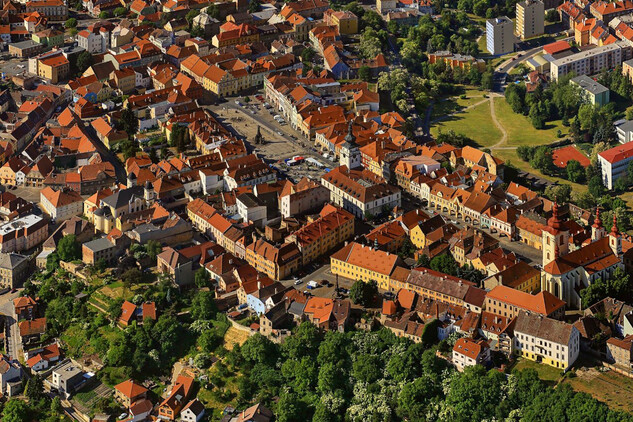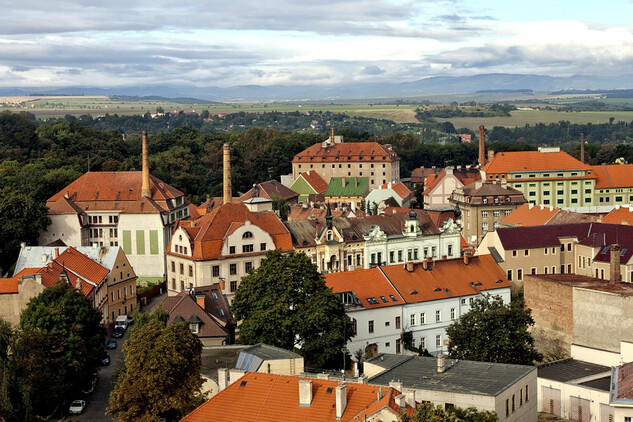Žatec and the Landscape of Žatec Hops
Žatec, within the scope of its historical core and the Prague suburb, along with the nearby landscape with hop fields near the village of Stekník, together form an outstanding comprehensive example of a landscape associated with hop cultivation in both rural and urban environments. The site was inscribed on the World Heritage List in 2023, where it currently stands as the sole representative of landscapes with hop fields and buildings associated with hop processing and trade
Žatec and the Žatec hop landscape are located in the northwestern part of the Czech Republic in an area that offers ideal conditions for growing hops, the main aromatic ingredient in beer production. The heritage site consists of two components that together illustrate the entire cycle of cultivating the world's most famous hop variety, Žatec semi-early red hops, as well as its processing and trade.
Component 1 (Žatec Hop Landscape) consists of rural hop fields with the small villages of Trnovany and Stekník, where the Stekník Chateau, managed by the National Heritage Institute, is located. This cultural landscape is characterized by the predominant use of agricultural land for hop cultivation along with structures related to hop farming.
Component 2 (Žatec) consists of the historic center of the town of Žatec (German: Saaz) along with its 19th-century industrial suburb. This ensemble of diverse buildings represents an outstanding example of an urban environment supporting the cultivation, processing, storage, and export of hops. Both components are geographically close, connected by the Ohře River.
This evolving cultural landscape and its architectural heritage associated with hop cultivation and processing bear exceptional witness to a tradition that has lasted for more than 700 years and continues to this day. This remarkable landscape features a variety of elements—from traditional hop fields to buildings used for drying, packing, certification, and storage of hops, as well as parts of the historical transport network of roads, railways, the Ohře River, and other waterways. It also includes related administrative, cultural, and ecclesiastical buildings and cultural practices. This landscape, with its specific buildings and structures associated with hop production, is a testament to the close interaction between the rural hop-growing landscape and its urban support system.
World Heritage List PHOTO GALLERY WHL
